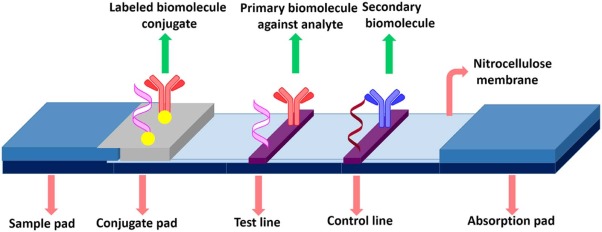What Are Lateral Flow Assays? (LFAs)
Lateral flow assays (LFAs) are commonly used in many point-of-care diagnostics and also in rapid testing. LFAs typically involve the detection of target analytes in a sample using a reagent and a strip-based format. Lateral flow reagent dispensing is a critical step in lateral flow assays (LFAs). Reagent dispensing in lateral flow assays refers to the controlled application of various reagents onto specific areas of the test strip to facilitate the detection process.
Ivek's Digispense® Striper is a semi-automatic lateral flow reagent dispensing / positioning system that is intended for continuous non-contact fluid dispensing onto various substrates such as nitrocellulose for manufacturing lateral flow assays (LFA).
View The Digispense® Striper
Lateral flow assays are a fast and easy to use diagnostic testing tool that utilizes reagents and does not require the use of, or the need for, complex laboratory equipment. Lateral flow assays offer rapid and accurate results within minutes. Convenient, portable, and suitable for point-of-care testing or in-field applications, LFAs have been widely used for the detection of various analytes, including infectious diseases, pregnancy hormones, drugs of abuse, foodborne pathogens, and environmental contaminants.
 Courtesy Science Direct
Courtesy Science DirectLateral Flow Assay Overview
A lateral flow assay (LFA) is composed of four parts: a sample pad, which is the area on which sample is dropped; conjugate pad, on which labeled tags combined with biorecognition elements; reaction membrane containing test line and control line for target DNA-probe DNA hybridization or antigen-antibody interaction; and absorbent pad, which reserves waste.
In a lateral flow assay, reagents are typically dispensed onto the test strip or pad to initiate the reaction and facilitate the detection process.
Examples of Lateral Flow Assays
- Pregnancy tests.
- Infectious diseases; COVID 19 tests.
- Opiates and other drugs.
- Foodborne pathogens.
- Environmental contaminants.
